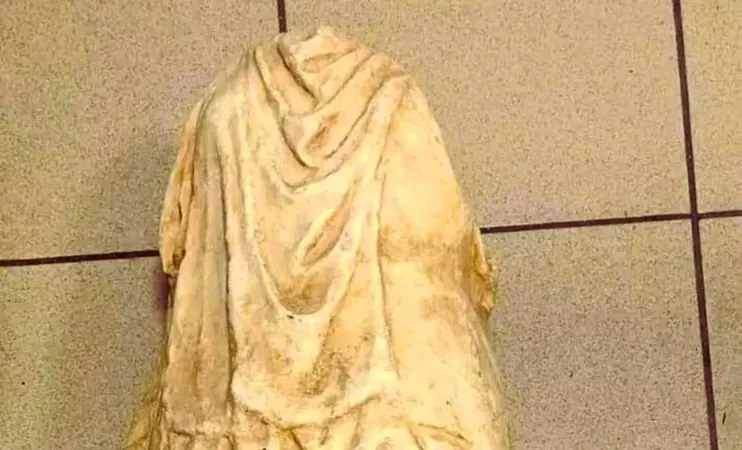
Stunning 2,000-Year-Old Greek Statue Found Near Trash in Thessaloniki — A Hidden Hellenistic Treasure!
2025-01-24
Author: Ming
The Breathtaking Discovery
Upon its discovery, the statue was quickly examined by local authorities and an archaeologist from the Ephorate of Antiquities. Experts confirmed that the relic dates back to the Hellenistic period, specifically between 323 B.C. and 30 B.C. Given Greece's law which declares all archaeological finds as state property, the authorities acted swiftly to secure the artifact.
Estelle Strazdins, an esteemed classical studies expert from the Australian National University, commented on the statue's artistic significance. It is likely a depiction of a goddess, characterized by its intricate marble detailing and loose drapery. Strazdins noted, "This piece is not just art; it's an offering possibly made to a deity in a temple, reflecting the spiritual practices of the time."
Investigations Underway
Authorities are now delving into the mystery surrounding how this extraordinary statue was left near a refuse site. The Greek Police Cultural Heritage Protection Office is leading the investigation, hoping to trace the statue's origins and explore potential links to illegal antiquities trafficking. A brief detention of a suspect occurred, but no charges have been filed, raising concerns about the protective measures for Greece's cultural heritage.
The incident sheds light on the continuing fight against the illicit trade of cultural artifacts in a nation rich with archaeological history. This find is not just an anomaly; it highlights the ongoing struggle to safeguard Greece's heritage against theft and neglect.
Preservation and Future Studies
The statue has been secured by law enforcement and is currently undergoing forensic examination in Northern Greece. Once this analysis is complete, it will be transferred to the Ephorate of Antiquities, the agency tasked with preserving and studying ancient artifacts. Experts are eager to uncover its exact origins, artistic influences, and cultural significance to better understand its place in history.
A Historical Gem in Thessaloniki
Thessaloniki, established in 315 B.C. by Cassander of Macedon, has long been a hub of cultural and economic activity. With its rich tapestry of Greek, Roman, and Byzantine influences, the city serves as a historical goldmine for archaeological discoveries. This recent statue adds to Thessaloniki's profound legacy as a center of ancient Greek art and spirituality.
The rediscovery of this statue exemplifies the enduring significance of Hellenistic Greece and the vital need for effective preservation measures. As authorities continue to investigate its surprising abandonment, the statue represents an invaluable bridge to the past — a tantalizing glimpse into a world long gone, yet ever-important in our understanding of history.


 Brasil (PT)
Brasil (PT)
 Canada (EN)
Canada (EN)
 Chile (ES)
Chile (ES)
 Česko (CS)
Česko (CS)
 대한민국 (KO)
대한민국 (KO)
 España (ES)
España (ES)
 France (FR)
France (FR)
 Hong Kong (EN)
Hong Kong (EN)
 Italia (IT)
Italia (IT)
 日本 (JA)
日本 (JA)
 Magyarország (HU)
Magyarország (HU)
 Norge (NO)
Norge (NO)
 Polska (PL)
Polska (PL)
 Schweiz (DE)
Schweiz (DE)
 Singapore (EN)
Singapore (EN)
 Sverige (SV)
Sverige (SV)
 Suomi (FI)
Suomi (FI)
 Türkiye (TR)
Türkiye (TR)
 الإمارات العربية المتحدة (AR)
الإمارات العربية المتحدة (AR)